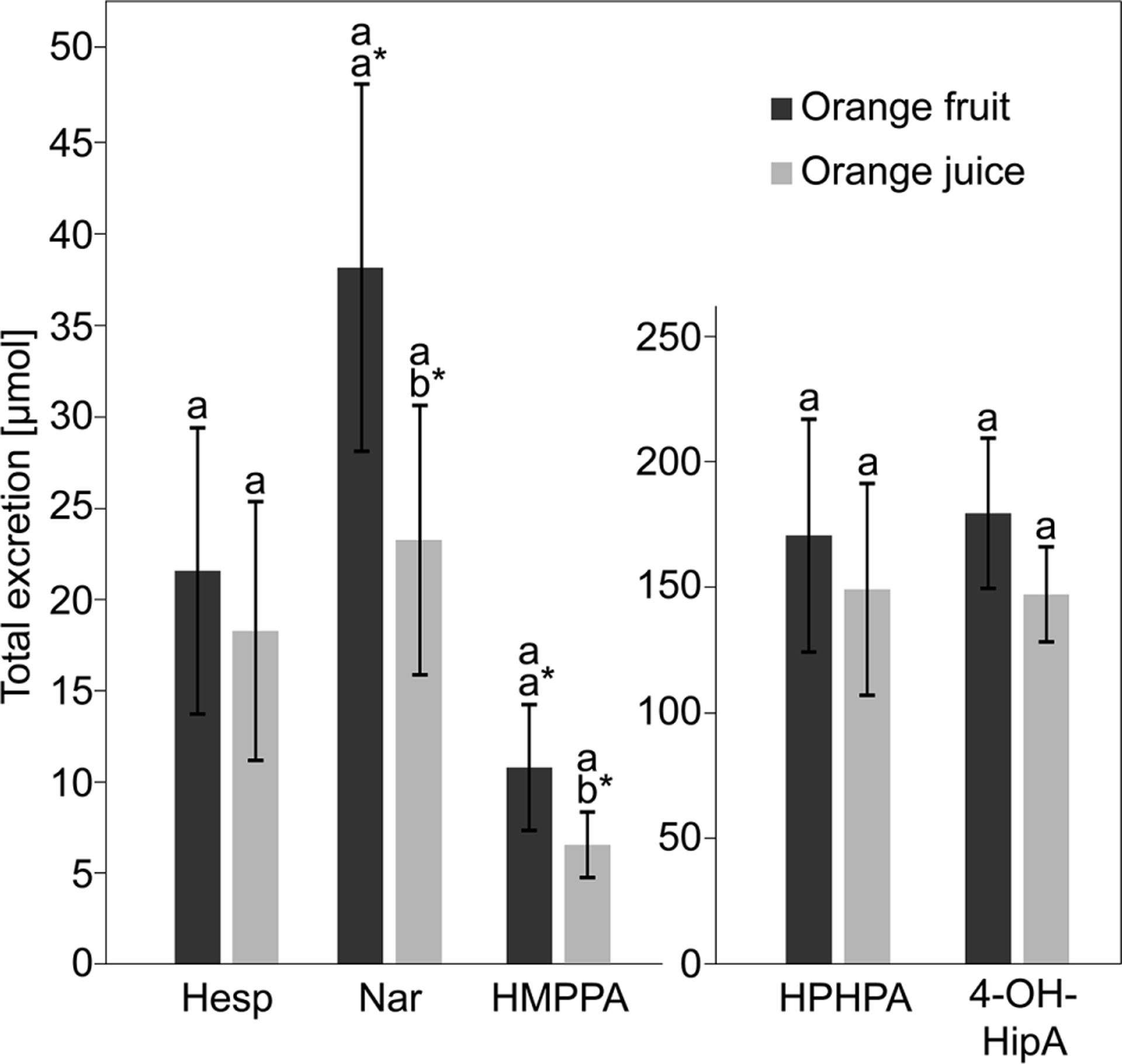Figure 2.

Excretion of hesperetin (Hesp), naringenin (Nar), and the phenolic catabolites 3-(3′-hydroxy-4′-methoxyphenyl)propionic acid (HMPPA), 3-(3′-hydroxyphenyl)hydracrylic acid (HPHPA), and 4-hydroxyhippuric acid (4-OH-HipA) in 24-h urine after consumption of either fresh orange fruit (dark gray bars) or pasteurized orange juice (light gray bars). Columns represent means (n = 11), vertical error bars indicate standard errors of mean. Different letters above the bars indicate significant difference between the two treatments (fruit/juice consumption) as assessed by the nonparametric Cochran–Mantel–Haenszel (CMH) test (p < 0.05). Differences between all treatments were nonsignificant according to the CMH test. When applying an ANOVA to the logarithmically transformed data, excretion of Nar (p = 0.0022) and HMPPA (p = 0.0297) were significantly higher after consumption of orange fruit as compared to orange juice (a*, b*).
